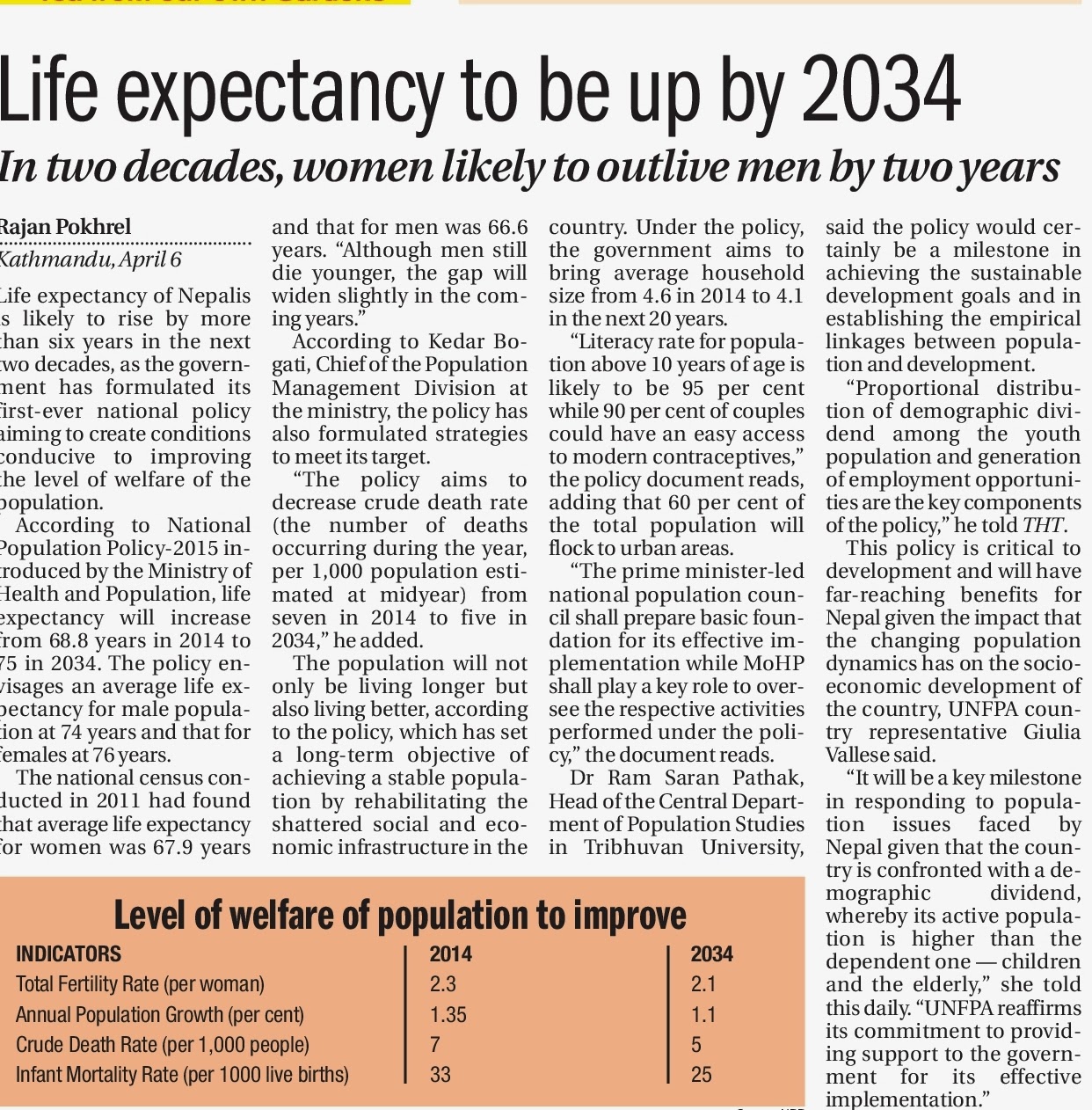Life expectancy to be up by 2034
In two decades, women likely to outlive men by two years
Level of welfare of population to improve
This policy is critical to development and will have far-reaching benefits for Nepal given the impact that the changing population dynamics has on the socio-economic development of the country, UNFPA country representative Giulia Vallese said. “It will be a key milestone in responding to population issues faced by Nepal given that the country is confronted with a demographic dividend, whereby its active population is higher than the dependent one — children and the elderly,” she told this daily. “UNFPA reaffirms its commitment to providing support to the government for its effective implementation.”



